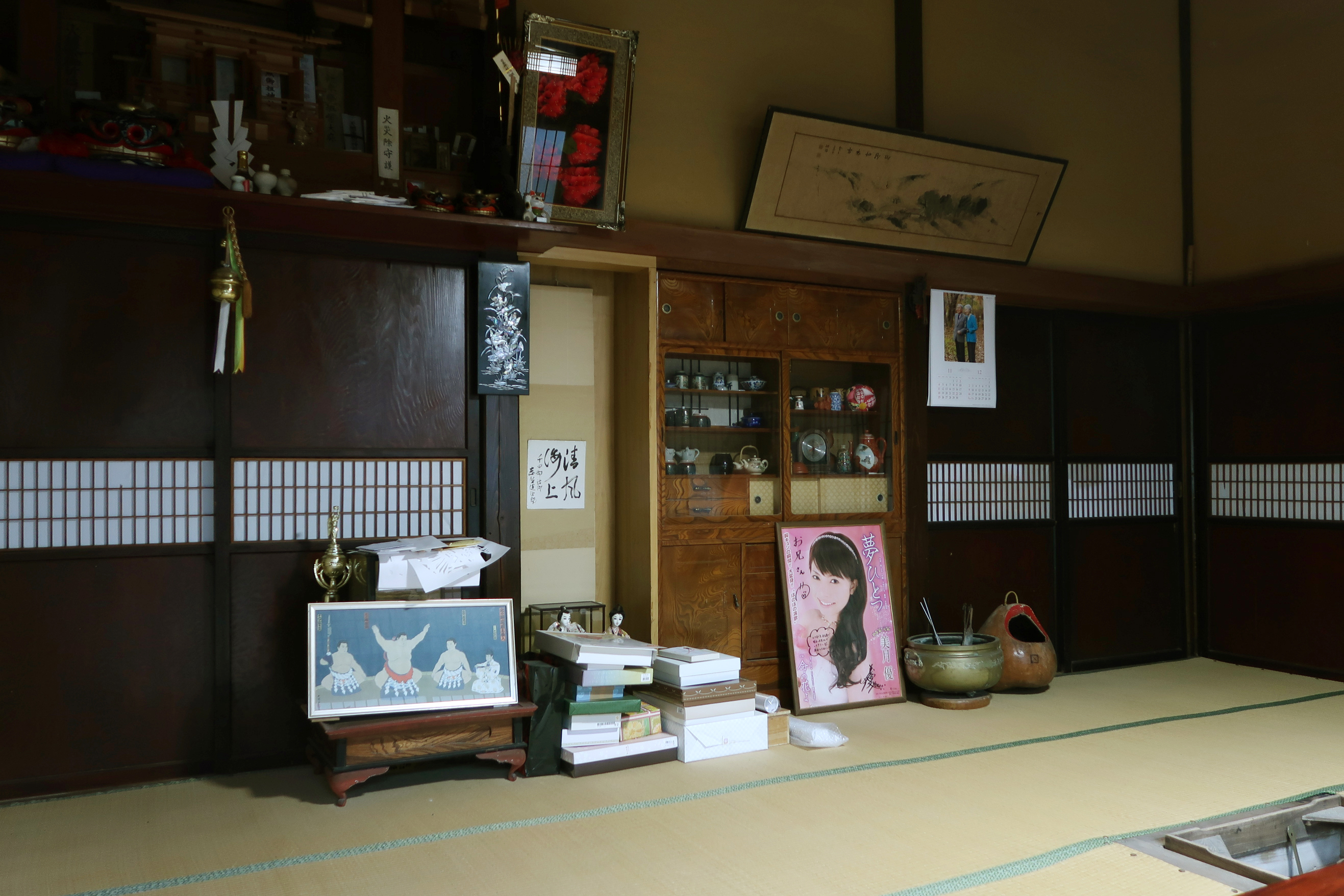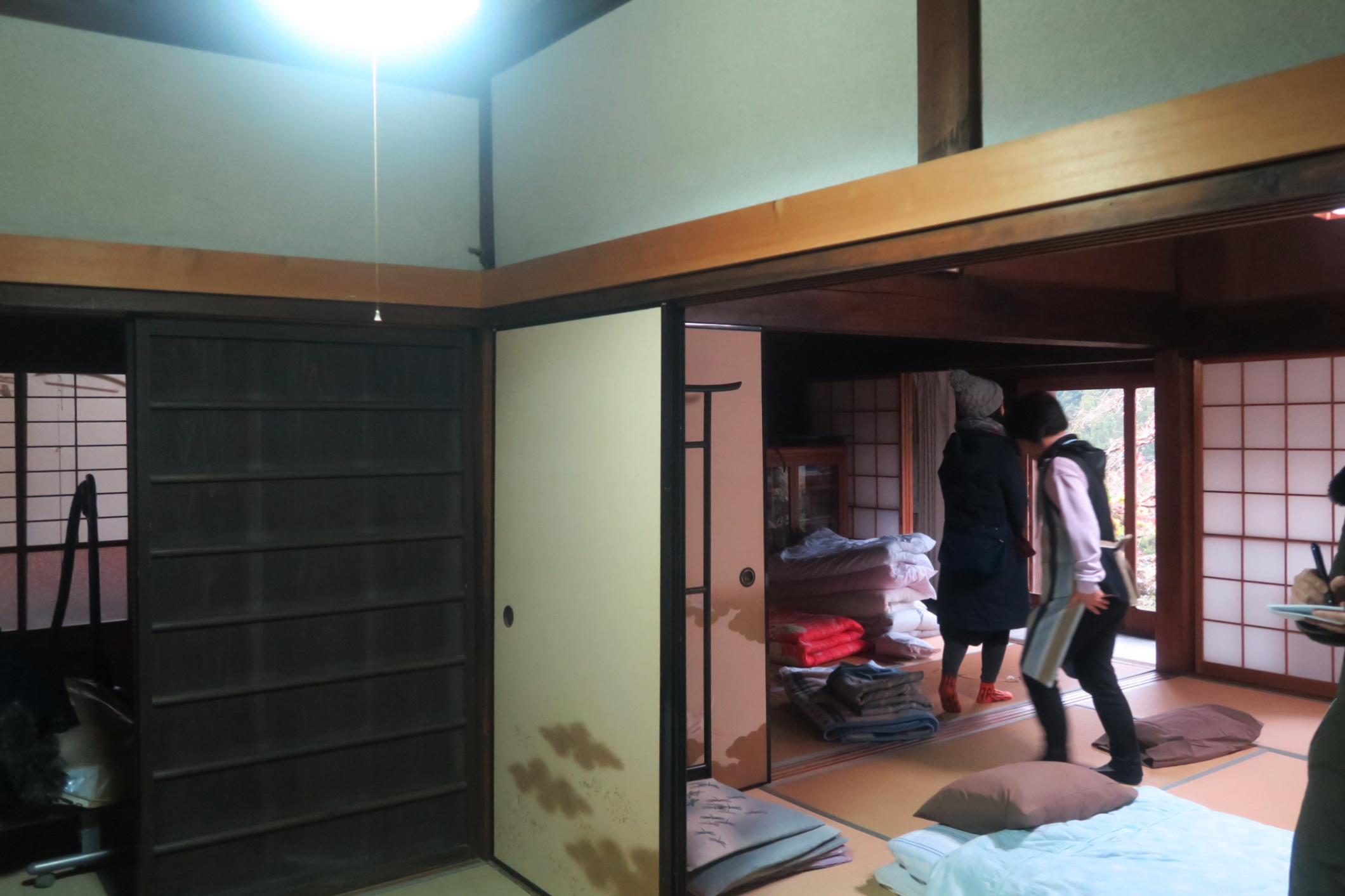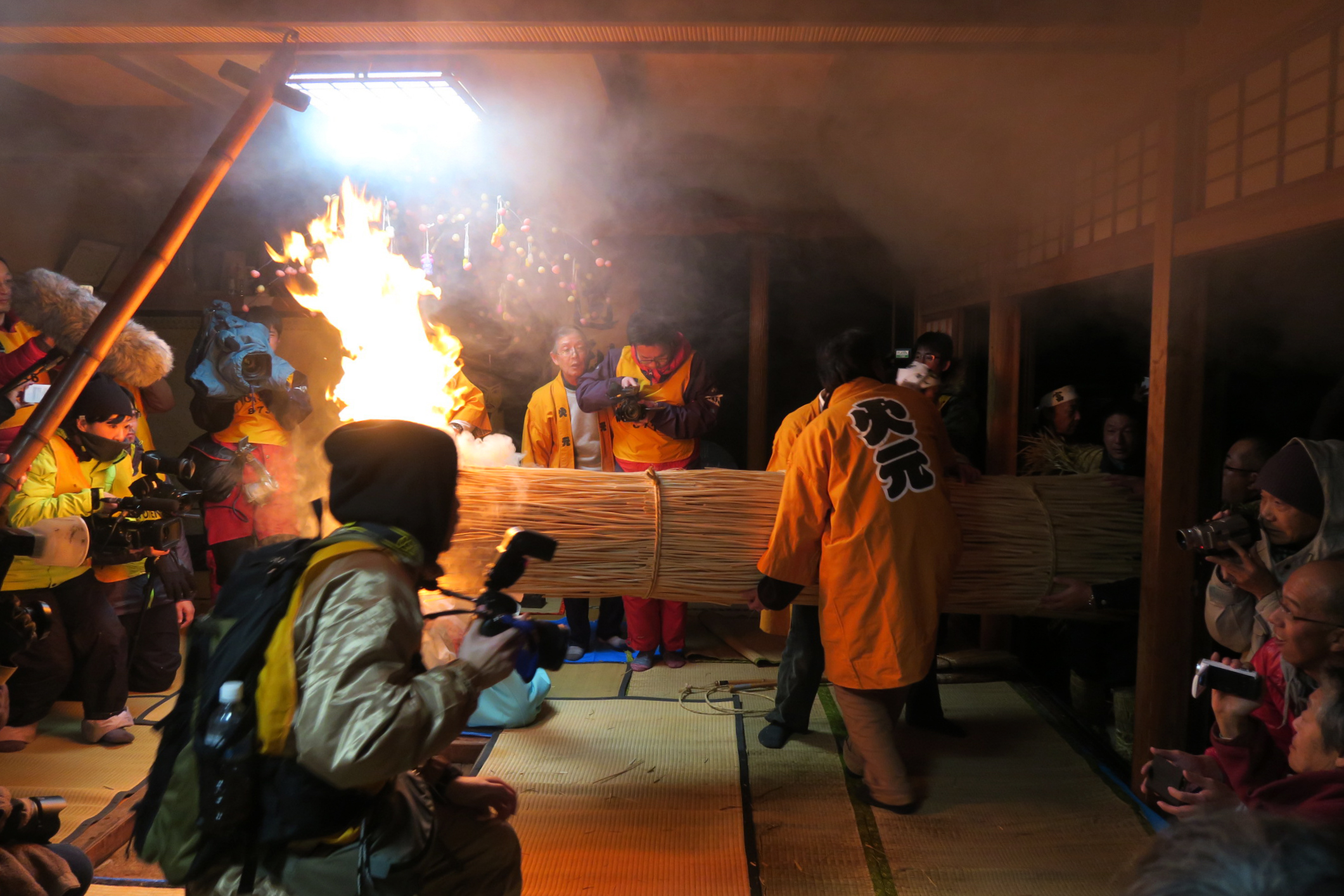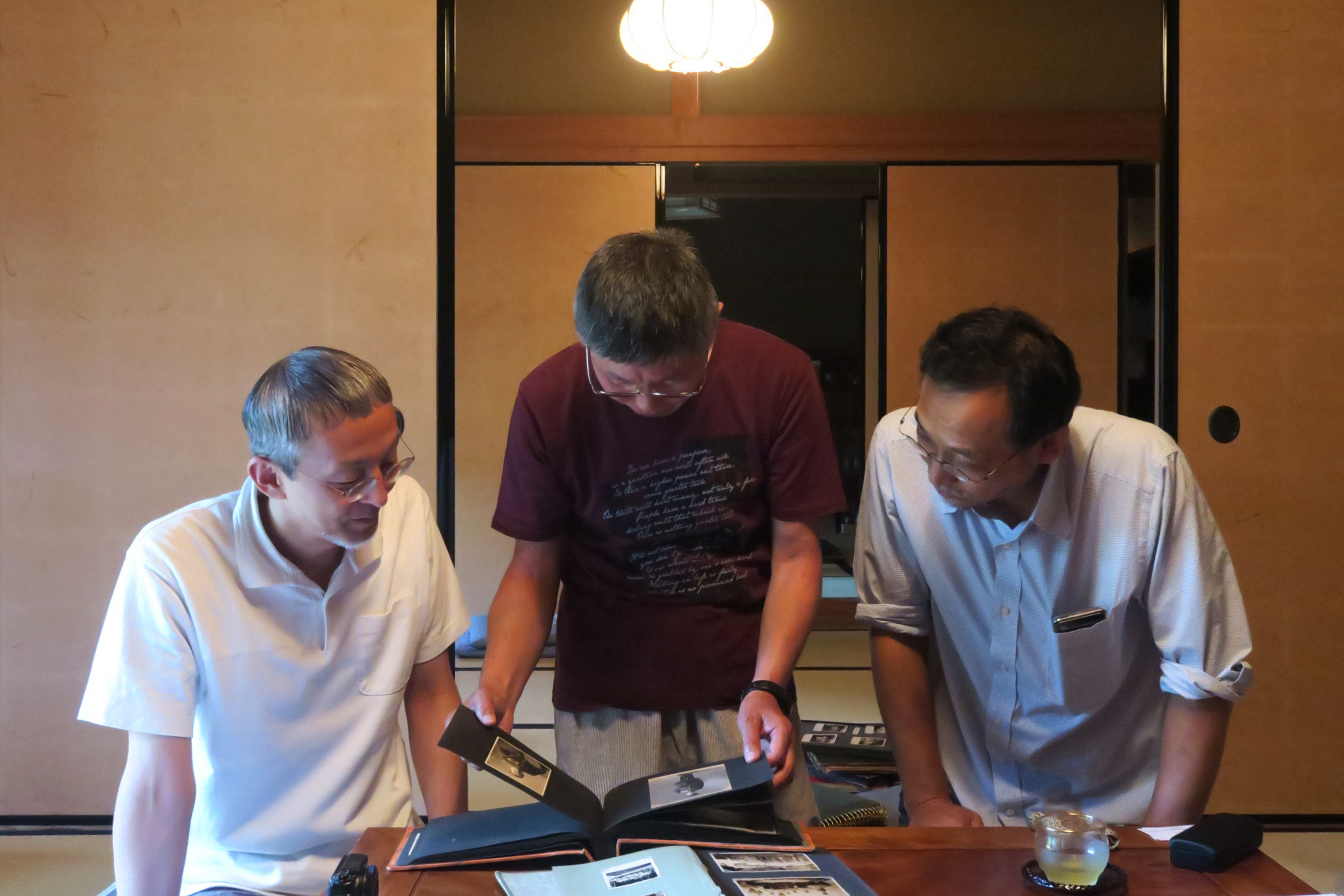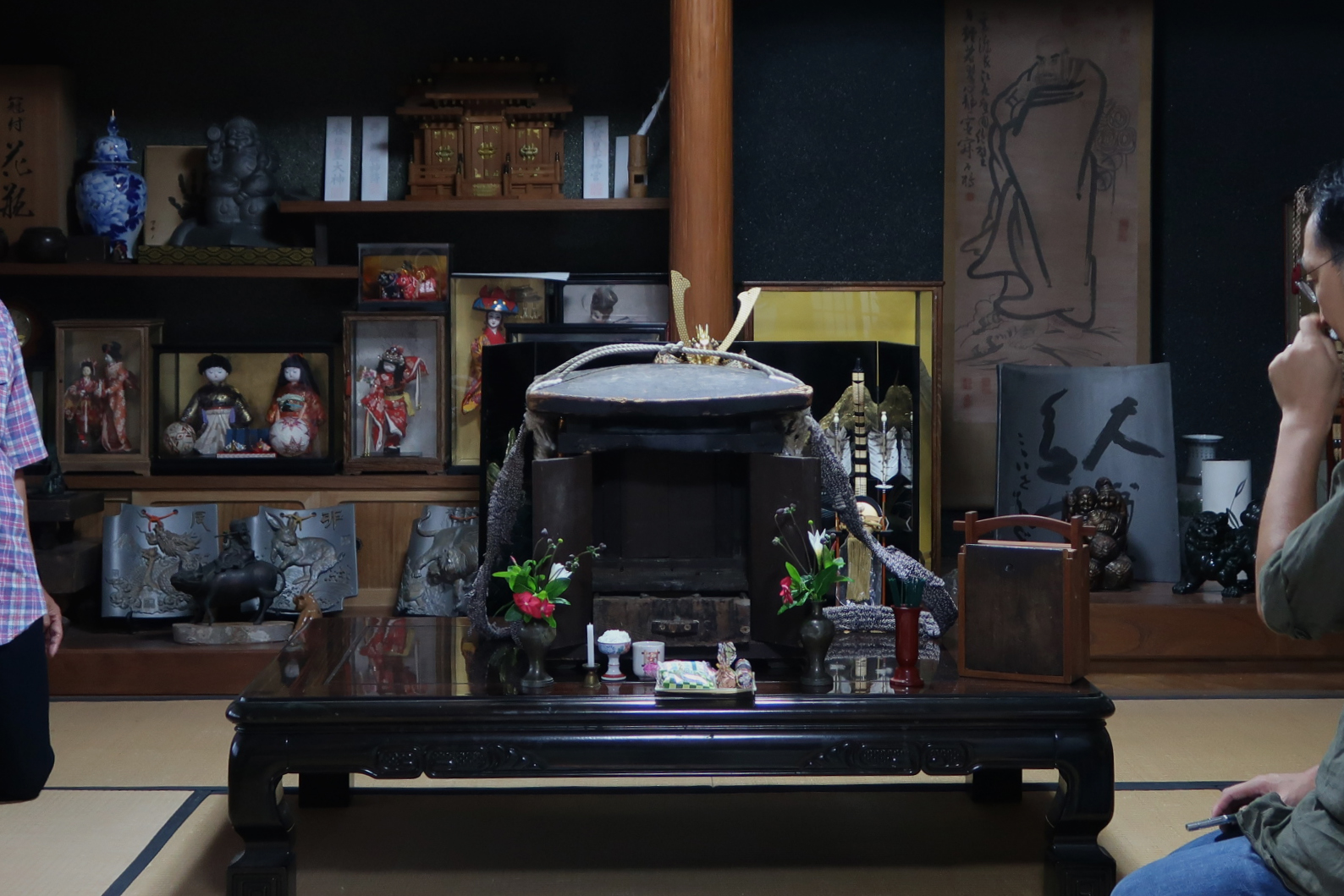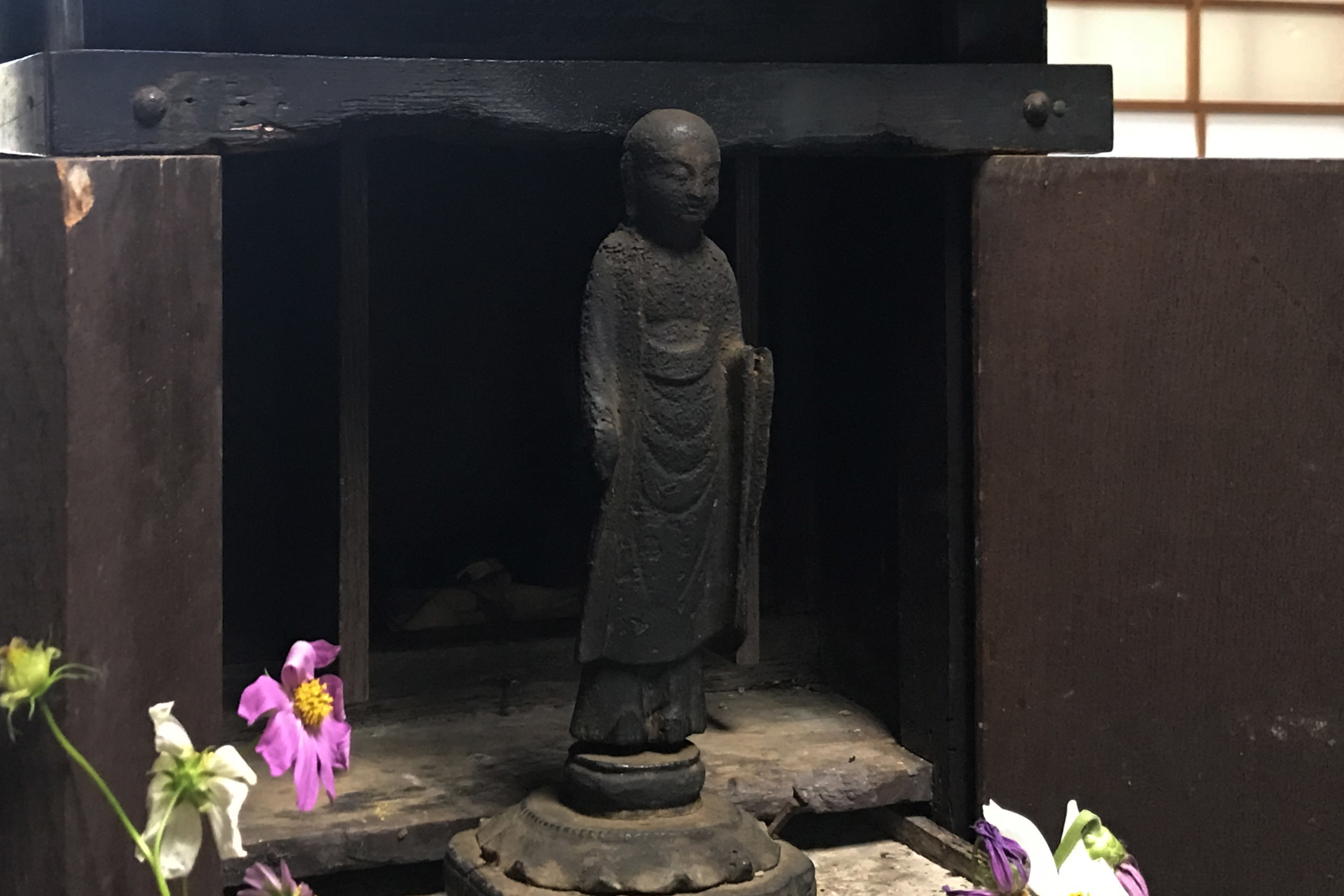Invisible Ritual
Katsuya Fukushima
The first thing I saw in the architectural history class as a student was the pyramids and tombs that represented the power of rulers. The various ceremonies held in those places are the fundamental functions of architecture. The concept of Hare and Ke proposed by the folklorist Kunio Yanagita comes from the Japanese view of clearly separating the special festive days from the daily lives. Then festivals would belong to Hare, and most of the articles of this issue would mainly deal with the rituals during the special festive days. However, I was asked by the editor to write about the festivals occurring in the house daily. It is a complex topic to tackle, but it seems to link with my interest as an architect.
The “Black Door” in the Japanese farmhouses
Our office is based on two pillars: design and research. As a research project, we participated in a study that focused on the book of Wajiro Kon’s “Nihon no Minka” ¹, the first book of Japanese farmhouses, and revisited the houses included in the book. The findings of that study were published as a book². I would not detail that book, but I would instead focus on the uncanny “black doors” I saw during the visit to the farmhouses.
The black door existed throughout all of the farmhouses we visited regardless of their areas or village structures. The doors had a shiny black finish with no decorations, and they mostly were doors for the storage of Hiroma (living room). I first thought they were just doors, but after seeing numerous doors across different regions, I started to wonder about the reasons behind them. This leads our office to conduct research on black doors.
Rituals and “Ecstasy”
There were no precedents for research on black doors for their historical or functional backgrounds. Thus we decided to look into architectural or anthropological studies and found several precedents. The architectural critic Chris Fawcett writes about rituals in houses from an architectural and anthropological perspective in his essay “Do we live to build or build to live?” ⁴. Fawcett points out that rituals are forms of transferring from the within to outside of the daily lives, and Kamidanas (god/spirit-shelf) were altars for the household to worship their gods. He describes the transition of the mental state during the rituals as “Ecstacy”, and it is not something functional like it could be “useful” but as a fundamental behaviour that we all have as a “primitive desire”. It seems like a bizarre claim, but when you regard ecstasy as a form of tension, you understand that a house is not only for comfort but sometimes requires some excitement.
When we next researched past studies on the rituals in Hiroma (living room) that hosts the black doors and Nando (storage space) that is the next room to the Hiroma, we learned the relation of its period and actor. There are daily and special days for the period, and the actors are the community and the family. Their relation would be as below:
The rituals on the farmhouses
Hiroma
Rituals of the community→Festivals for the agricultural gods and ancestors
→Special Event
Rituals of the community→The Kamidana (god/spirit-shelf) for the gods and the Butsudan
(Buddhist altar) for the ancestors
→Daily Event
Nando
Rituals for the family→Worshiping of death and life through sleeping and storage
→Daily Event
The rituals held in the Hiroma are functionally “visible rituals” to the people outside, and the rituals held in the Nando are morally “invisible rituals” hidden even to the family members. According to Fawcett, the ecstasy acquired from the rituals are the essence of houses. It is easy to comprehend that the visible ceremonies held in the Hiroma produce ecstasy to the participants. Still, the relation of invisible rituals in the Nando and ecstasy is something that requires further investigation.
The Unconscious Ecstacy
We conducted a research trip all over Japan in 2018 to study the relation of the rituals held in the farmhouse’s Hiroma and Nando. We found several black doors during this trip and saw a tendency of them being installed between the Hiroma and Nando. Usually, the Hiromas were neatly organised spaces, whereas Nandos were a space of disorder. The black doors looked as if suggesting the invisible rituals held in the Nando. So why would the secret rituals be required to indicate its presence?
I would like to hypothesise that farmhouses require different ecstasy from the visible and invisible rituals. The visible rituals, such as the festivals of the community, are tangible things. Hence, they bring firm tension to the houses, but they only affect for a short period. In contrast, the ecstasy brought by the invisible rituals such as the black doors is challenging to be aware of. However, they bring soft tension to the house that affect for an extended period. They are things like a neatly cleaned space where people become naturally calm. In most of the houses we researched, the rituals held in Nando were no longer performed. However, it felt like the soft tension brought through the black door still existed.
The hypothesis that there are two ecstasies of conscious and unconscious for farmhouses and they produce diversity and richness to the spaces through the strength and duration of tension is still not a concrete argument but is starting to become an intriguing one.
The Rituals of the Modern-day Houses
The anthropologist Masao Takatori points out in his book “Minzoku no Kokoro” ⁵ that religion in Japan is a form of Syncretism. The gods are divided into public and private; the private gods would never come in front of the public gods acknowledged by the community but would exist closely to the daily lives of farmhouses, changing their form and sometimes controlling the public gods. The invisible rituals of the farmhouses are for worshipping the private gods. Takatori argues the possibility of these private gods still existing in our modern-day houses.
In the previous essay by Fawcett, he suggests that the Japanese architects of the 1970s called the “Generation of Nobushi (former samurais turning into bandits)” tried to take in the various ecstasies in their designs; they were the conscious ecstasy produced by the visible rituals. The unconscious ecstasy produced by the invisible rituals has never come under the spotlight to today. The invisible rituals are the alien elements within the house that are best hidden. This is different from both the special events ceremony of Hare or the daily events ceremony of Ke. It is a strong word to use, but it is best described as Kegare(defilement). The black door exists on the border of the living space and Kegare.
Modern-day houses have excluded rituals from their spaces. So how should we deal with them today? It is obviously impossible to incorporate the visible rituals like the community’s festivals to the houses today where the social structures are distant from the past. However, the indications of the invisible rituals like the black door could be effective even without the ritual itself. I see the possibility of an effective design to today’s houses in such way.
Notes:
1.Wajiro Kon, Nihon no Minka, (Tokyo, Suzuki Shoten, 1922)
2.Rekiseika, Revisiting Wajiro Kon’s “Nihon no Minka” [Kon Wajiro “Nihon no Minka” Saihou], (Tokyo, Heibonsha, 2012)
3.Jusoken 2018 Research Grant, The studies on the rituals of Japanese Living Spaces, (2018)
4.Chrris Fawcett, Do we live to build or build to live? , Ontology of houses: Japan, (Tokyo, A.D.A. EDITA Tokyo, 1978)
5.Masao Takatori, Minzoku no Kokoro, (Tokyo, Asahi Shinbun, 1972)
Kenchiku Zasshi September 2021 “The current situation of Festivals.”





